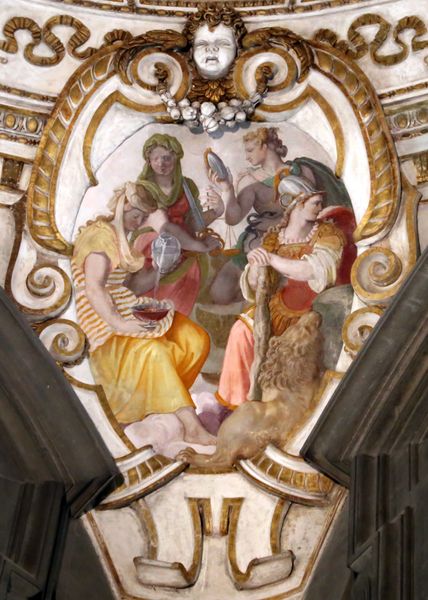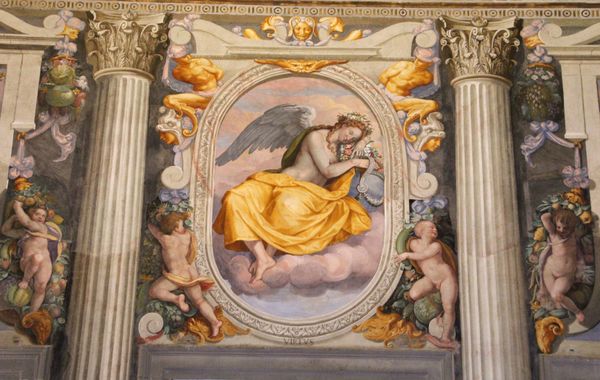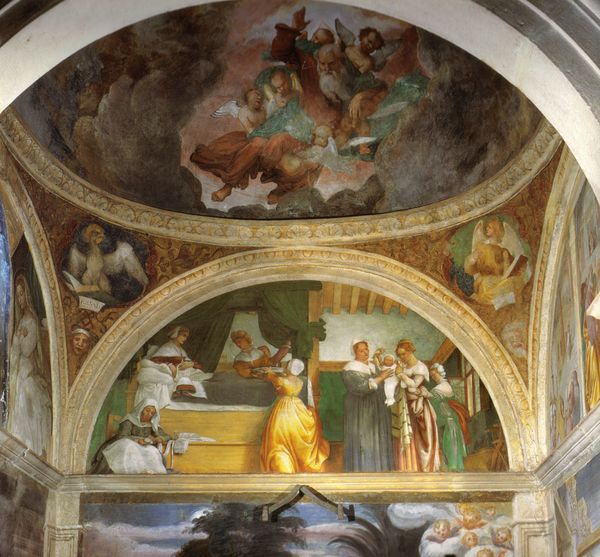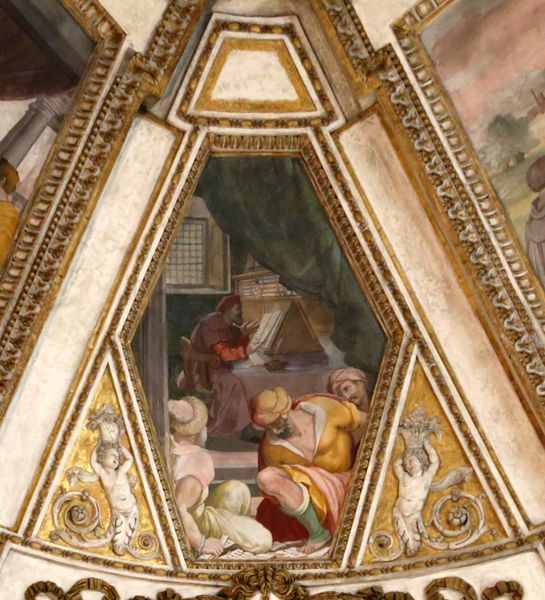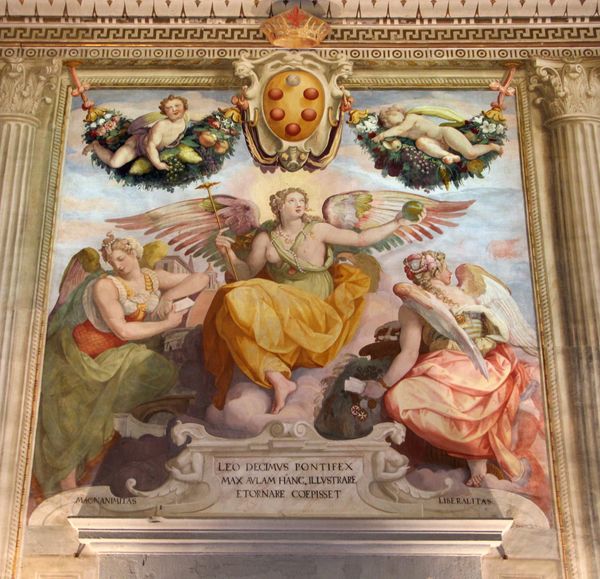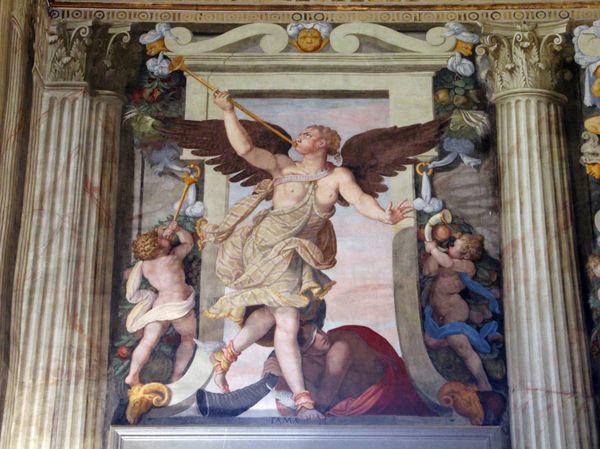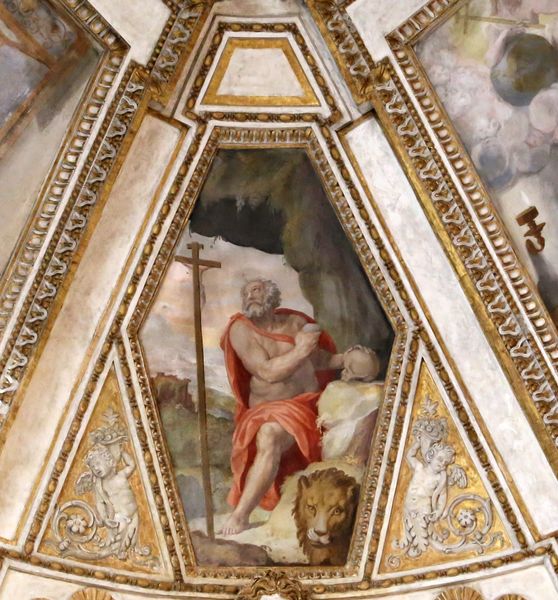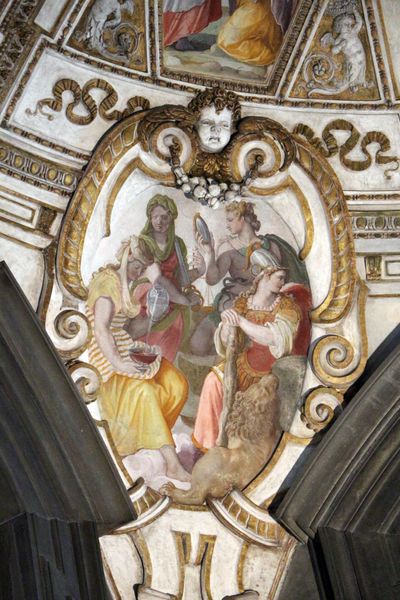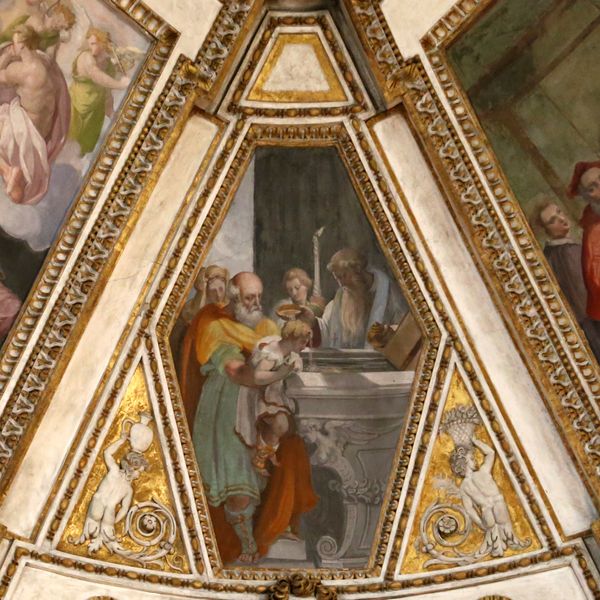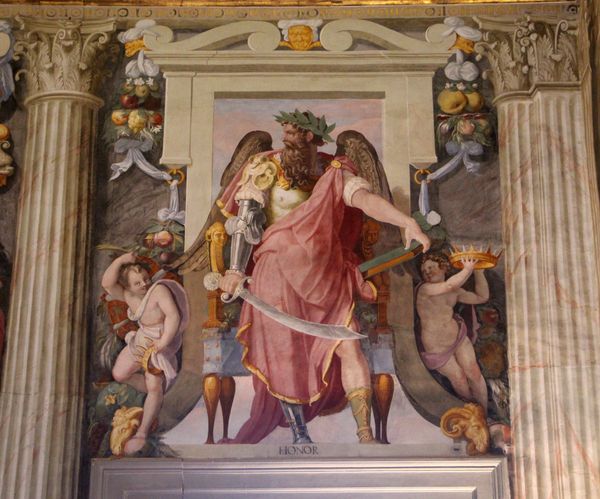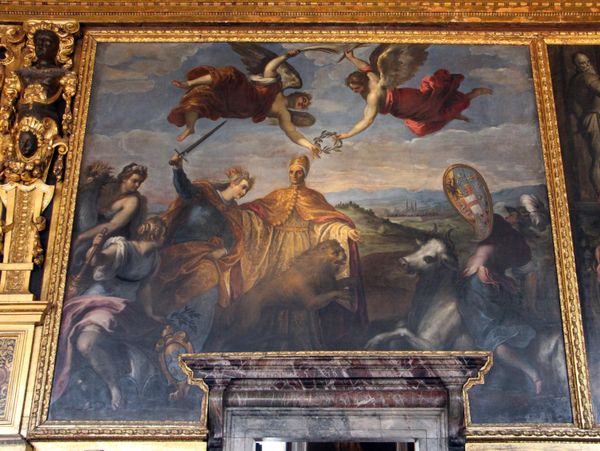
tempera, painting, mural
#
allegory
#
tempera
#
painting
#
mannerism
#
figuration
#
italian-renaissance
#
mural
Copyright: Public domain
Curator: We are looking at “Stories of St. Jerome” painted in 1577 by Alessandro Allori, located in Santa Maria Novella, Florence, Italy. Editor: My first thought is that this mural exudes the languid artificiality typical of late Mannerism. It feels decorative above all else. Curator: Precisely. Note how Allori employs elongated figures, a hallmark of Mannerist style. These elegant forms, seemingly defying gravity, are arranged within a complex and ornate architectural frame, a stylistic element intended to impress upon the viewer a sense of refinement and erudition. Editor: But who are these women? I want to decode their presence in relation to St. Jerome. Given the historical context, could this perhaps be a critical, perhaps even subversive, commentary on the role of women and the power dynamics within religious narratives? Are they muses, distractions, or active participants in the shaping of history? Curator: A stimulating proposition! Formally speaking, each figure possesses an object of note. In the painting's center, we have the woman holding a laurel wreath over her head, and beside her are the women toting musical instruments and containers. These attributes could, perhaps, be symbols referring to elements or passages from the hagiography of St. Jerome, subtly woven into the composition. The gestures are graceful but almost performative, serving the greater image as a visual harmony. Editor: The tempera medium here adds a tactile quality; its materiality connects with our present and speaks to this image as something tangible as well as referential. We see these representations through the lens of history, artifice, and the lives and experiences of real bodies who moved and breathed around it, the tension of these binaries charges my understanding of the artwork with more complexity. Curator: Indeed. Through careful formal study, it’s a compelling instance of Allori's skill, and it highlights Mannerism’s departure from Renaissance naturalism in its embrace of sophisticated artifice. Editor: Ultimately, this artwork encourages us to explore how women of the 16th century may be more than idealized allegories within a theological narrative, and perhaps something else.
Comments
No comments
Be the first to comment and join the conversation on the ultimate creative platform.
